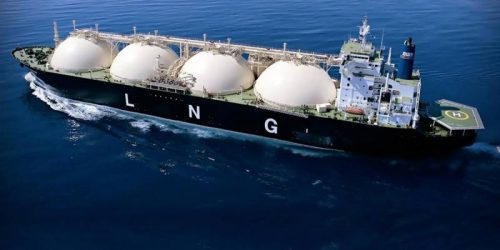Karachi — Pakistan may auction unutilized LNG regasification capacity of around 300 MMcf/d available at the government-owned Gasport Terminal in an effort to reduce the financial burden, Abdullah Ghais Paracha, chairman of the All Pakistan CNG Association, told S&P Global Platts.
The country’s Economic Coordination Committee in July approved a proposal to give third parties access to its LNG receiving facilities by selling capacity not utilized by the state-run importer, a move industry officials say would encourage more private sector participation in the country’s LNG sector.
Ghais said the government’s plan to auction unutilized capacity should witness strong interest from private companies looking to start importing spot cargoes by the end of October.
Industry officials say about 300-400 MMcf/d of overall LNG capacity is currently not being utilized. With the proposal for third-party access going through, it would result in incremental LNG demand for three to four spot cargoes per month, helping inflows to rise substantially.
Pakistan currently has two operational LNG terminals — Elengy Terminal with a capacity of 600 MMcf/d, and Gasport Pakistan Ltd. with a capacity of 600 MMcf/d. While the Elengy Terminal, which commenced operation in 2015, is fully utilized, the GasPort terminal, which commenced operations in 2017, is under-utilized.
Due to the under-utilization of the second terminal, regasification tariff worked out to be around $0.6159/MMBtu and $0.7273/MMBtu during the financial years 2018-19 and 2019-20, respectively. The tariff would have been much lower at $0.4177/MMBtu had the terminal operated at its full 600 MMcf/d capacity, Ghais said
“Higher terminal tariff has caused additional financial burden of $32.5 million and $43.2 million during 2018-19 and 2019-20, respectively, which has been shifted to the end-consumers of RLNG in the form of higher gas prices,” Ghais said.
Pakistan’s domestic gas deficit is expected to more than double in five years from the present shortfall of 1,440 MMcf/d, creating challenges for power and fertilizer companies as well as the industrial sector, according to an annual report from the country’s Oil and Gas Regulatory Authority released in August .
The demand-supply gap is expected to widen to 3,684 MMcf/d by financial year 2024-25 and to 5,389 MMcf/d by 2029-30, the report said, adding that supplies will not be sufficient to meet the rising demand from the various sectors of the economy, particularly power, domestic, fertilizer, captive power and industry.
The government has recently approved construction of two new floating regasification units or FSRUs. With Pakistan turning out to be one of the fastest growing LNG markets since it first started importing in 2015, analysts say there is an urgent need to speed up building domestic gas infrastructure and import capacity expansions, which have been planned to absorb incremental inflows.





